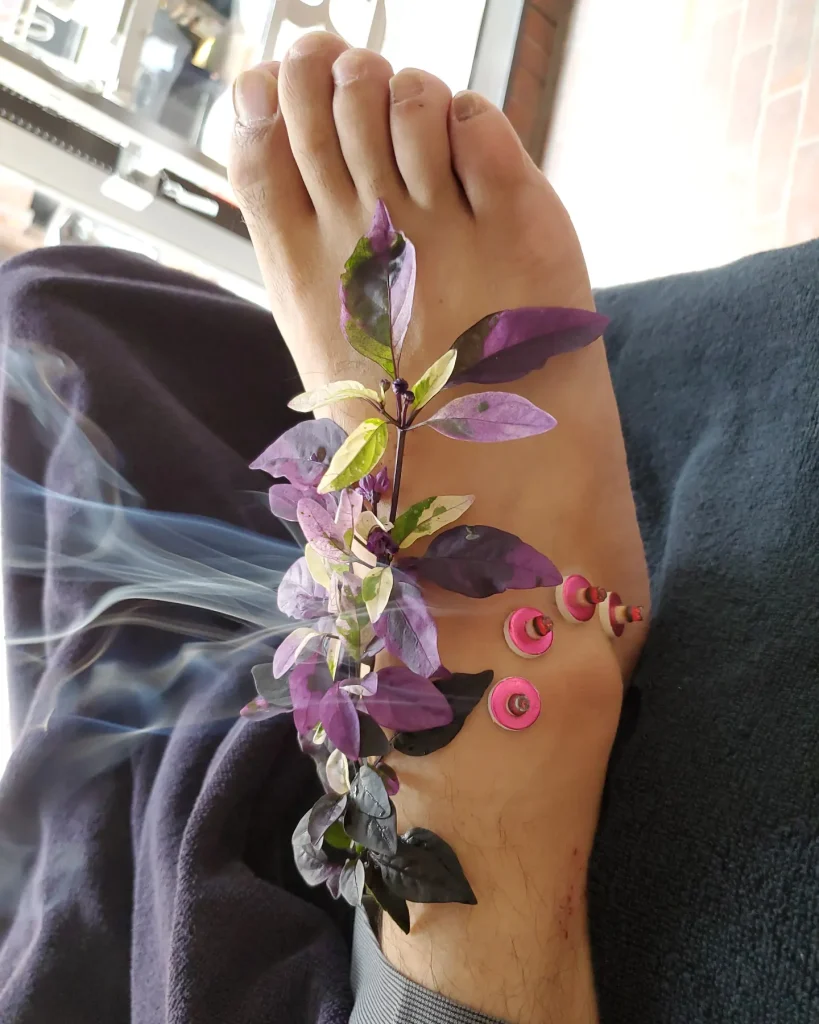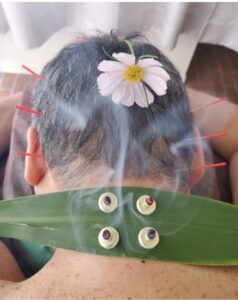足首の痛み 距腿関節
Ankle Pain, Talofemoral Joint
一般的に足首の関節は脛骨、腓骨、距骨の3つの骨で形成され、さらに靭帯により補強されていて、非常に安定した関節となっています。足関節、距腿関節と呼ばれています。足首を下げたり反らせたりという動作を行っています。捻挫をしていない、過去に捻挫もしていないのに、足関節、足首が痛くなる病気の要因は多岐わたりますが、 変形性足関節症も多くみられる症状です。足関節の軟骨がすり減ることで関節の隙間が狭くなってこすれ合い、腫れや痛みを生じます。関節の変形により、動作が制限されて坂道などの歩行が不自由になります。変形性足関節症には一次性と二次性があって、一次性は主に加齢が原因となります。これは年齢とともに靭帯がゆるみ、足が内側へと倒れてきて、まず内側の関節の隙間が狭くなり、徐々に全体の関節の間が狭くなっていきます。二次性は過去に、骨折や捻挫などの外傷、あるいは、関節にばい菌が入って化膿性の関節炎を起こした後や、先天性の内反足などの手術をした後に起こります。ほかにも関節リウマチ、痛風といった要素も考えられます。鍼灸治療としては、疼痛緩和をさせ、血流の少ない靭帯部分や痛みのある患部への血行を促進して、症状の悪化を防ぎます。
In general, the ankle joint is formed by three bones, the tibia, fibula, and talus, and is further reinforced by ligaments, making it a very stable joint. It is called the ankle joint or talofemoral joint. It performs the movement of lowering and warping the ankle. There are a wide variety of factors that can cause ankle and ankle pain in patients who have not sprained their ankle or ankle joint, and who have not sprained it in the past. As the cartilage in the ankle joint wears down, the space between the joints narrows and rubs against each other, causing swelling and pain. The deformity of the joints limits movement and makes it difficult to walk on slopes and other surfaces. Osteoarthritis of the ankle can be primary or secondary. This occurs as the ligaments loosen with age and the foot falls inward, first narrowing the space between the medial joints and then gradually narrowing the space between the entire joint. Secondary cases occur after traumatic injuries such as fractures or sprains, or after surgery for suppurative arthritis caused by bacteria in the joints, or congenital clubfoot. Other factors such as rheumatoid arthritis and gout are also possible. Acupuncture treatment is used to relieve pain and promote blood circulation to ligamentous areas with low blood flow and painful areas, preventing the symptoms from worsening.

#sprainedankle #sprain #sprained #捻挫 #足首捻挫 #足首痛い #running #anklepain


